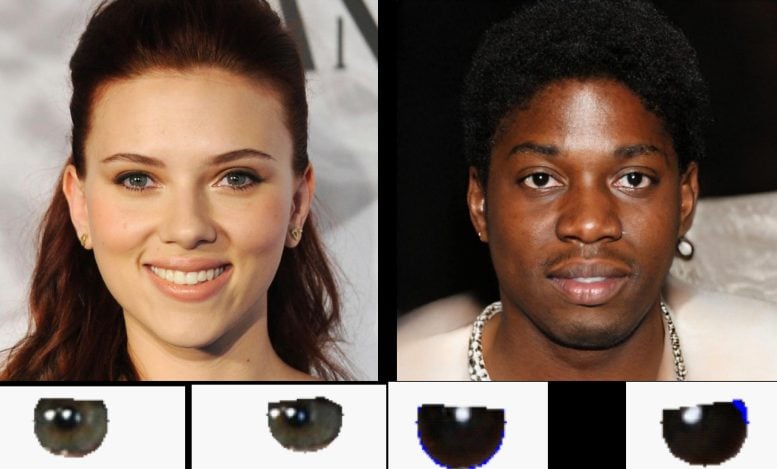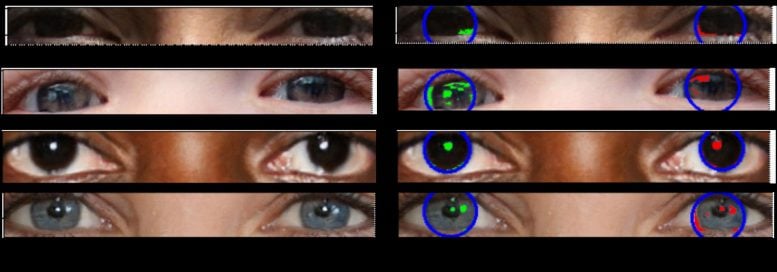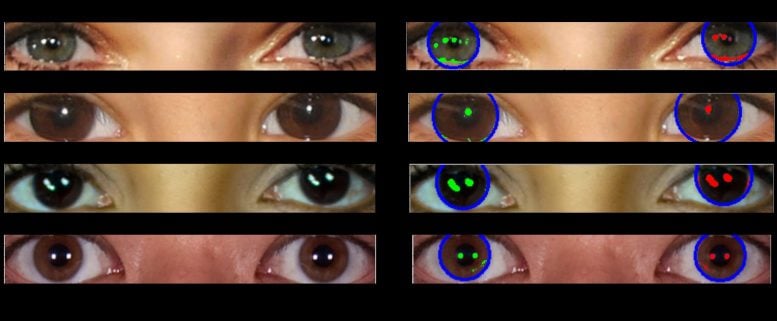
By using astronomical methods to analyze eye reflections, researchers can potentially detect deepfake images, though the technique includes some risk of inaccuracies.
In an era when anyone can create artificial intelligence (AI) images, the ability to detect fake pictures, particularly deepfakes of people, is becoming increasingly important. Now, scientists say the eyes may be the key to distinguishing deepfakes from real images.
Detecting Deepfakes Through Eyeball Analysis
New research presented at the Royal Astronomical Society’s National Astronomy Meeting indicates that deepfakes can be identified by analyzing the reflections in human eyes, similar to how astronomers study pictures of galaxies. The study, led by University of Hull MSc student Adejumoke Owolabi, focuses on the consistency of light reflections in each eyeball. Discrepancies in these reflections often indicate a fake image.

Astronomical Techniques in Deepfake Detection
“The reflections in the eyeballs are consistent for the real person, but incorrect (from a physics point of view) for the fake person,” said Kevin Pimbblet, professor of astrophysics and director of the Centre of Excellence for Data Science, Artificial Intelligence and Modelling at the University of Hull.
Researchers analyzed reflections of light on the eyeballs of people in real and AI-generated images. They then employed methods typically used in astronomy to quantify the reflections and checked for consistency between left and right eyeball reflections.

Measuring Inconsistencies and Implications
Fake images often lack consistency in the reflections between each eye, whereas real images generally show the same reflections in both eyes.
“To measure the shapes of galaxies, we analyze whether they’re centrally compact, whether they’re symmetric, and how smooth they are. We analyze the light distribution,” said Pimbblet. “We detect the reflections in an automated way and run their morphological features through the CAS [concentration, asymmetry, smoothness] and Gini indices to compare similarity between left and right eyeballs.
“The findings show that deepfakes have some differences between the pair.”
The Gini coefficient is normally used to measure how the light in an image of a galaxy is distributed among its pixels. This measurement is made by ordering the pixels that make up the image of a galaxy in ascending order by flux and then comparing the result to what would be expected from a perfectly even flux distribution. A Gini value of 0 is a galaxy in which the light is evenly distributed across all of the image’s pixels, while a Gini value of 1 is a galaxy with all light concentrated in a single pixel.
The team also tested CAS parameters, a tool originally developed by astronomers to measure the light distribution of galaxies to determine their morphology, but found it was not a successful predictor of fake eyes.
“It’s important to note that this is not a silver bullet for detecting fake images,” Pimbblet added. “There are false positives and false negatives; it’s not going to get everything. But this method provides us with a basis, a plan of attack, in the arms race to detect deepfakes.”
1 Comment
Interesting technique. The problem with the example application though, is the enlarged image of the “real” subject is also wrong. The eye on the left should show 4 lights, not 3.